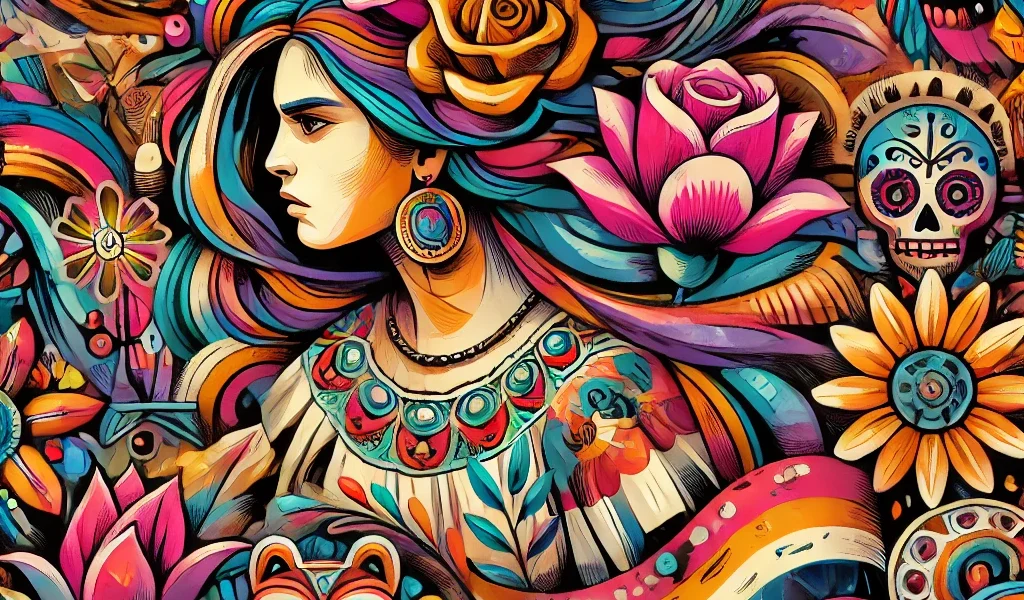Frida Kahlo: The Iconic Artist and Her Lasting Legacy
Frida Kahlo is one of the most celebrated artists of the 20th century, known for her vivid self-portraits, emotional depth, and unapologetic exploration of pain and identity. Kahlo’s life, marked by both personal struggle and artistic triumph, has left an indelible mark on the world of art and culture. Her unique style, combining elements of surrealism, symbolism, and Mexican folk art, continues to inspire generations of artists and activists worldwide.
This article will explore the life, work, and lasting influence of Frida Kahlo.
Early Life and Tragedy
Born on July 6, 1907, in Coyoacán, Mexico, Frida Kahlo was raised during a time of political revolution in Mexico. Her mother, Matilde Calderón y González, was of Indigenous and Spanish descent, and her father, Guillermo Kahlo, was a German immigrant. This blend of cultural backgrounds would profoundly influence her identity and artwork.
At the age of six, Frida contracted polio, which left her right leg thinner and shorter than the other. This early brush with illness was only a prelude to the physical suffering that would define much of her life.
In 1925, when Frida was 18, a catastrophic bus accident left her with life-threatening injuries, including a broken spine, collarbone, ribs, and pelvis. She spent months bedridden and endured numerous surgeries throughout her life. It was during her long recovery that Frida began to paint more seriously, using art as a way to cope with the physical and emotional pain she experienced.
Artistic Journey
Frida Kahlo’s art is deeply autobiographical, with much of her work reflecting her personal experiences of pain, love, and loss. Her use of vibrant colors, bold symbolism, and surrealistic elements set her apart from other artists of her time. However, Kahlo always rejected the label of surrealism, saying that she didn’t paint her dreams but her reality.
Self-Portraits and Symbolism
Frida is perhaps best known for her self-portraits, which often depicted her in various emotional and physical states. These paintings served as a form of self-exploration, addressing themes of identity, gender, post-colonialism, and the human body. Her self-portraits often included symbols of Mexican culture, such as indigenous plants and animals, traditional clothing, and references to ancient mythology.
One of her most famous works, “The Two Fridas” (1939), shows two versions of Frida sitting side by side, one dressed in European attire and the other in traditional Tehuana clothing, representing her dual heritage. The painting is a powerful reflection of her internal conflict and search for identity.
Political and Personal Life
Frida’s marriage to the famous muralist Diego Rivera in 1929 was one of the most notable relationships of her life. The couple shared a deep passion for art and politics, but their relationship was tumultuous, marred by infidelity and emotional turmoil. Despite their personal struggles, they remained deeply connected until Kahlo’s death.
Both Kahlo and Rivera were committed communists, and their political beliefs were integral to their work and lives. Kahlo’s art, particularly later in her career, reflected her growing interest in Mexican nationalism and the plight of the working class.
Physical Pain and Emotional Struggle
Frida’s life was marked by chronic pain from her injuries, multiple surgeries, and the emotional toll of several miscarriages. Much of her art reflects this suffering, with themes of physical and emotional trauma frequently appearing in her work.
Her painting “Henry Ford Hospital” (1932) graphically depicts her pain after suffering a miscarriage in Detroit. In this painting, Frida lies naked on a hospital bed, surrounded by symbolic representations of her loss and suffering. This work, like many others, embodies the way she transformed personal tragedy into powerful artistic expression.
Last Years and Death
Frida Kahlo’s health continued to deteriorate throughout her life. In the 1950s, she had her right leg amputated due to gangrene, and she suffered from severe depression during her final years. Despite her declining health, Kahlo continued to paint and exhibit her work, even attending her last exhibition in 1953 in a four-poster bed.
Frida Kahlo passed away on July 13, 1954, at the age of 47. Though her official cause of death was a pulmonary embolism, some speculate that she may have taken her own life, as her health had reached a critical point.
Frida Kahlo’s Legacy
Although Frida Kahlo achieved some recognition during her lifetime, her true fame and influence grew posthumously. Today, her work is celebrated globally, not just as fine art but as an enduring symbol of resilience, feminism, and self-expression.
Her home in Coyoacán, known as La Casa Azul (The Blue House), has been transformed into a museum dedicated to her life and art. It remains one of the most visited cultural landmarks in Mexico.
Influence on Feminism and LGBTQ+ Communities
Frida Kahlo’s bold exploration of her identity, sexuality, and gender roles has made her an icon in feminist and LGBTQ+ movements. Her rejection of traditional norms, both in her personal life and her art, resonates with those who seek to challenge societal expectations.
Kahlo’s portrayal of her own body, particularly her unapologetic depictions of her pain, miscarriages, and bisexuality, has cemented her status as a symbol of empowerment and self-acceptance.
Impact on Modern Art
Frida’s distinct style has influenced countless contemporary artists, particularly in how they approach self-portraiture and autobiographical art. Her works, which blend personal suffering with political themes, continue to inspire a new generation of artists who explore identity, gender, and cultural heritage in their art.
Conclusion
Frida Kahlo’s life was one of immense pain and immense creativity. Through her art, she managed to turn her suffering into something beautiful and deeply meaningful, not just for herself but for countless others who see themselves reflected in her work. Her legacy as an artist, activist, and cultural icon endures, making her one of the most influential figures in modern art history.
Frida Kahlo’s art transcends time, continually challenging societal norms and inspiring future generations to embrace their own identity and pain, just as she did.




